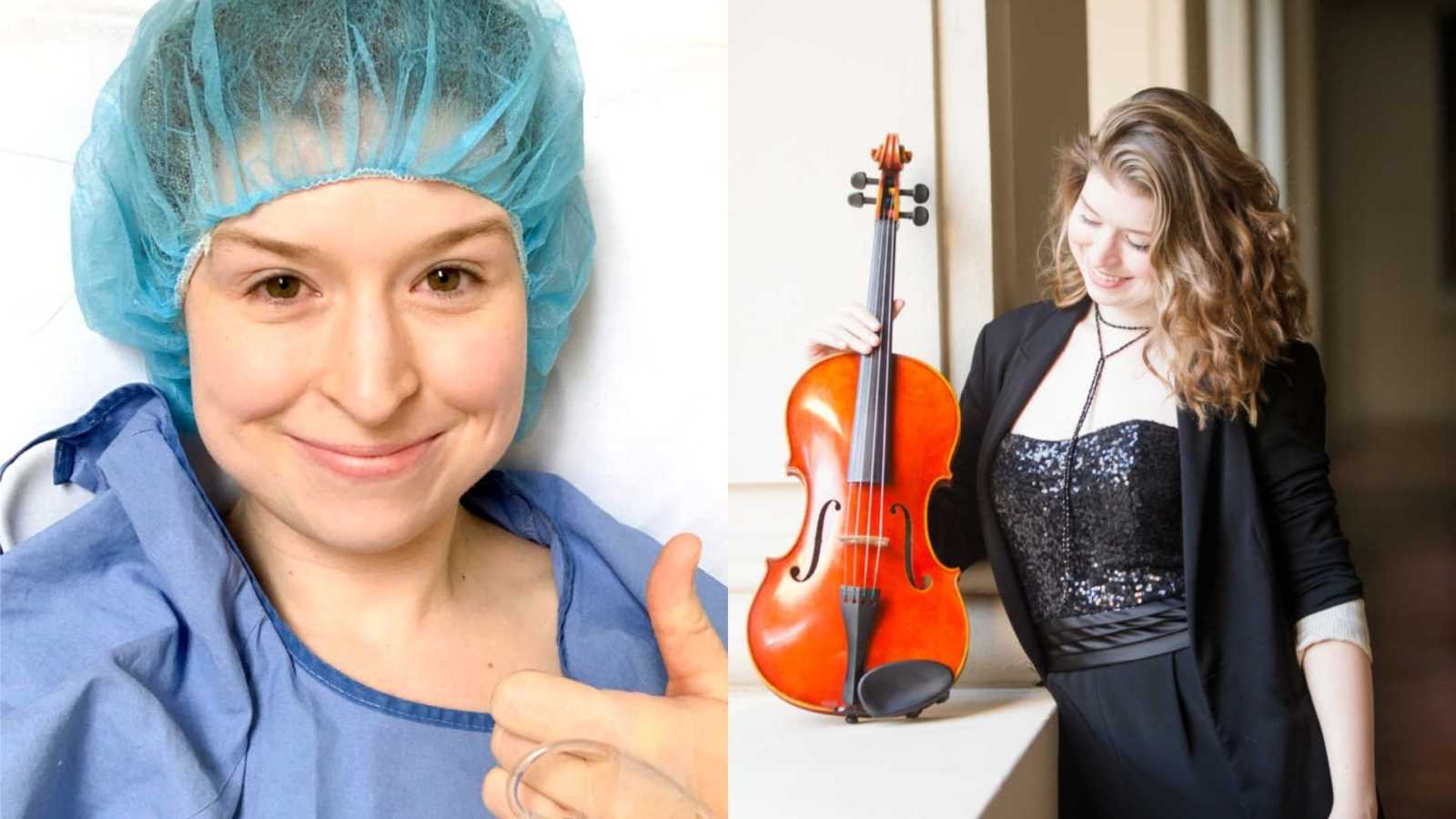“With every bump in the road I winced, the pain in my chest almost unbearable. I could hardly breathe. I tried to keep it together and smile from the backseat as my Uber driver made his way across town. ‘Could this be taking any longer?’ I thought to myself. I could feel every pebble under the wheels as we crawled through Central Park, runners out for their morning jog leaving us in the dust. It was September of 2016, and I had just moved across the country to New York City a mere 2 weeks earlier. We inched along the 97th-street traverse, past the tennis courts and reservoir. I silently pleaded with the upcoming street light, hoping it might allow more than 3 cars through per green, but to no avail. Finally, as we made our way out of the park, I felt a sense of relief – we were almost there, and my destination was finally in view. It was as if a beacon of light was radiating off the brown brick walls of Mt. Sinai. I had never been so happy to see a hospital before.
I gingerly stepped out of the car, thanked the driver, and made my way to the surprisingly vacant lobby of the emergency room – they were expecting me. I checked myself in and sat down in a chair closest to the ER entrance and waited. Little did I know I would be spending several more days in this building, undergoing numerous tests and procedures, and hearing ‘but you’re so young’ more times than I care to remember. I’m sure you’re probably wondering how I ended up completely alone in a New York City emergency room at just 22 years old. Well, let me take you back 14 years and put things into context.
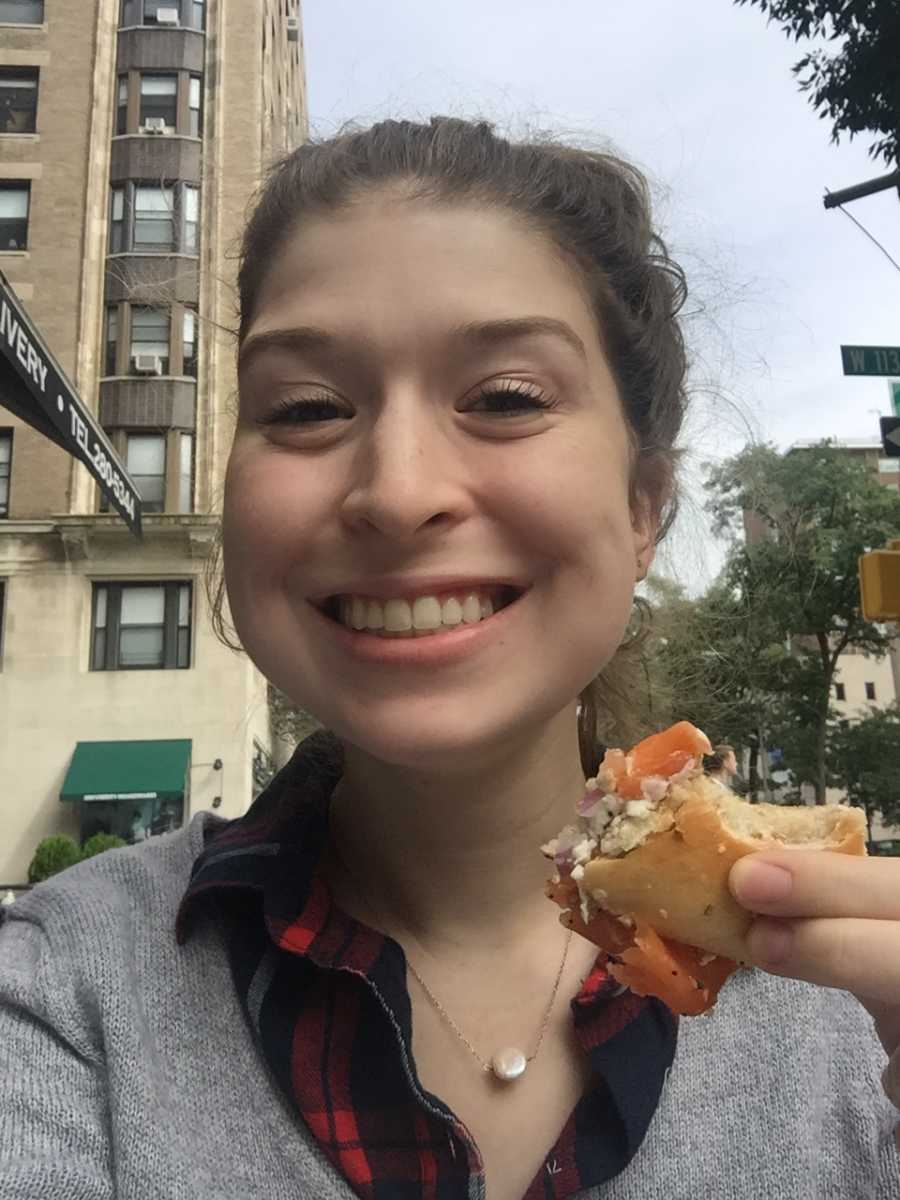
Since before I can even remember, music has always been a part of my life. I like to joke I was singing before I was speaking. When I was 8 years old, I decided I wanted to play the violin, and though my dad tried to convince me to pursue an instrument more suited to accompanying myself, I was set in my ways. You see, the violin was ‘the most beautiful instrument in the world,’ according to 8 year old me, and I couldn’t see myself playing anything else. With minimal effort, my dad surrendered, and soon I had my very own violin.
By the time I was 13, I started to hear about this performing arts high school in Los Angeles. It required an audition process to be admitted, and for whatever reason I decided that I absolutely NEEDED to go there. Unfortunately, if I wanted to be accepted I had to step up my game. After talking with my private teacher, I decided to try my hand at the viola, an instrument I was told would provide me with a lot more opportunities with a lot less competition. Initially I was devastated – how could I ever relinquish ‘the most beautiful instrument in the world’ for some middle-voiced stepdaughter who nobody even liked?! It only took a few moments of hearing the richness of this undervalued instrument, feeling the vibrations of the low C-string deep within my bones, to convince me I had it all wrong. The viola stole my heart right then and there, and I never looked back.

Once I switched instruments, I found a newfound passion for classical music. I no longer skated by on my ear or natural abilities, but instead started working – hard. I excelled at the viola in ways I never had with the violin, and after being accepted to that arts high school, I decided to pursue music in college. I spent my senior year traveling all around the country, meeting teachers and auditioning for different programs. I remember at the time being so busy that I couldn’t focus on anything else. I had set a goal for myself, and my attention was entirely consumed with achieving that goal. I was so focused, in fact, that I unintentionally ignored what started happening with my body.
‘It’s just stress,’ I thought. ‘Everyone has to pop Imodium like candy when they get nervous, it will get better when I get through this semester.’ I wasn’t entirely wrong. My frequent bathroom trips did calm down after I got through audition season and made my decision to attend The University of Texas at Austin to work towards a degree in music performance. Unfortunately though, this GI distress was an early warning sign of what was to come; one that I really wish I would have paid more attention to at the time.
I had always been an incredibly healthy child. The product of IVF and often considered a ‘miracle baby,’ it wasn’t until I moved to Austin and started college that weird health issues started to pop up. From the stomach flu to bizarre allergic reactions to mono to repeated strep throat infections, it felt like every few months something new was wrong with me. Despite these reoccurring challenges, I made it through my degree program with honors and received special recognition at graduation. I did it – I had peaked. I was now on my way to The Juilliard School to pursue my graduate degree, and was flying high on 4 years of incredible life lessons and educational achievements.
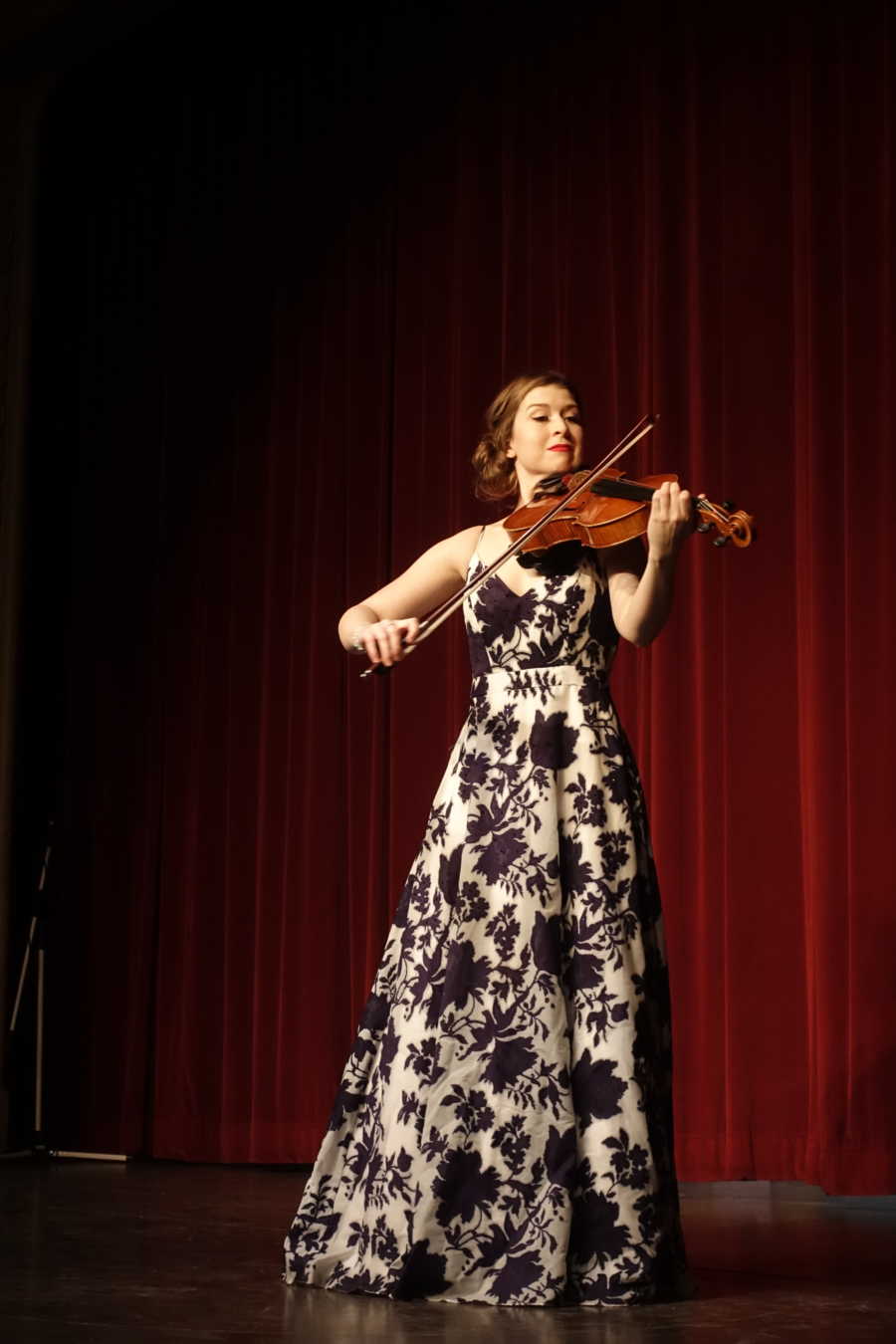
The summer before I moved to New York, I headed up to northern California to teach at a music festival for kids. Things didn’t quite go as planned, though. I can remember the exact moment I first felt that sharp, stabbing pain in my back. It was right smack dab in the middle of sight-reading a Mozart quartet with the other faculty members. The pain came out of nowhere, and though I tried to ignore it, it never quite went away. The stabbing was sporadic, and always worse when I would take a breath, but the constant dull pain underneath my left shoulder blade would become a permanent part of my daily experience after that. I assumed it was a playing-related injury, undoubtedly sparked by over-practicing, and when a visit to my uncle, a chiropractor, revealed nothing structurally wrong, I decided it wasn’t a big deal. I had more important things to worry about, and soon my mom and I, armed with 4 suitcases and a whole lot of unjustified confidence, boarded a plane headed for JFK.
Now let me tell you, moving into an apartment in Manhattan? Not an easy feat for anyone. Building Ikea furniture? Also no simple task. Piling said Ikea furniture onto a bus and trying to get it from New Jersey back to the city, all while emotionally preparing for the first day of school and battling chronic pain was next level. If I could tell my past self to put down the screwdriver and hire someone else to build the bed, I would.
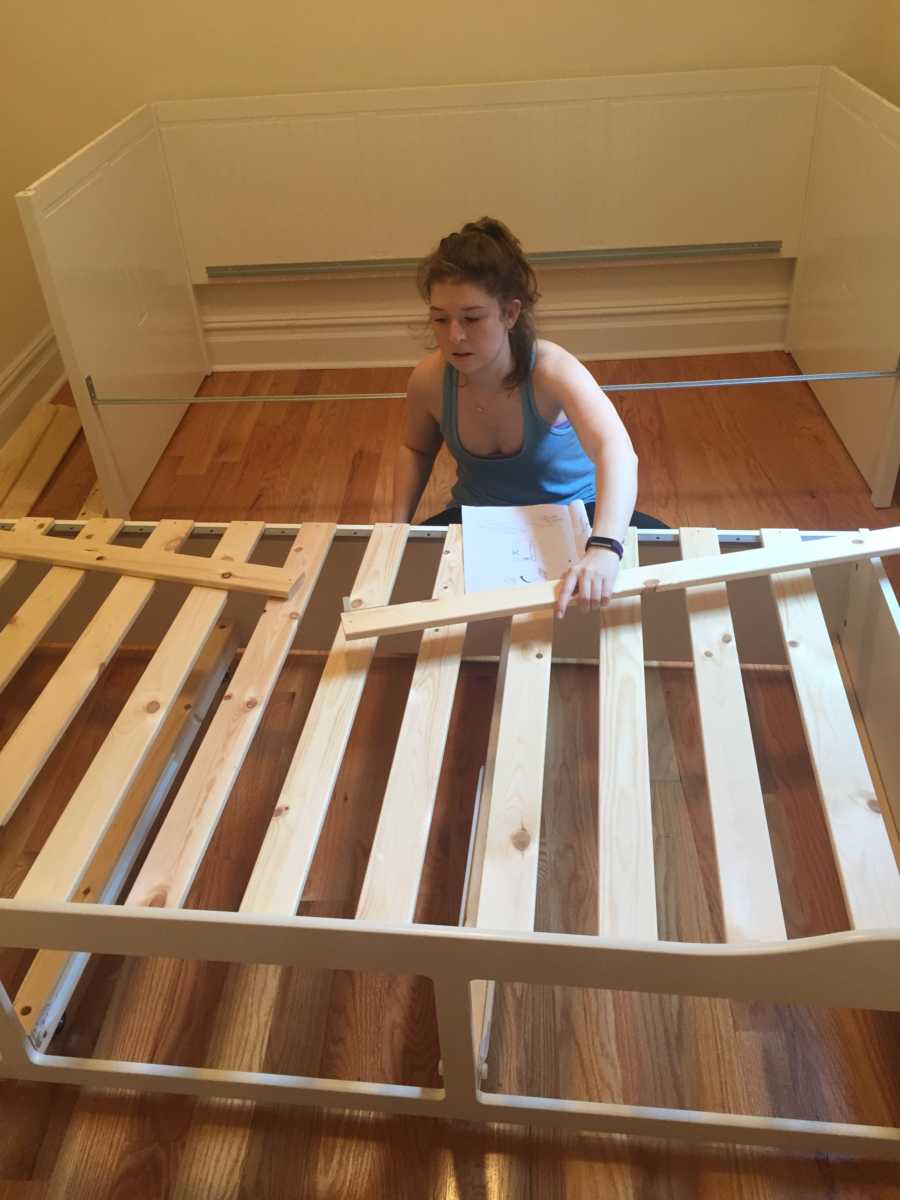
Despite all of this, though, I moved into my wonderful, tiny room in my wonderful, tiny apartment on 122nd Street and Broadway, just a few blocks from Columbia in the sweet little neighborhood of Morningside Heights. I had never intended to go to Juilliard – it was never my dream, and even when I applied I never actually thought I would be accepted. But suddenly I was there, standing in Lincoln Center and staring out across 65th Street at the gray, angled fortress, the Illumination Lawn like a green canvas slightly blocking my view. The Juilliard School. It felt so fancy!
School had officially started, and it wasn’t long before I started waking up at 4:00 in the morning in excruciating pain. I tried heating pads and ice packs, sleeping on one or the other to get through the night. I visited another chiropractor in Harlem who gave me an adjustment that left me nearly incapacitated, and an herbalist downtown who put drops on my tongue and told me I was low in iron and should try supplements. Nothing seemed to help the pain. Finally one morning it became too much, and after yet another sleepless night and teary phone call to my mom, I quite literally crawled out of bed, got myself dressed, and called an Uber. I found an urgent care center on 103rd Street that opened at 8:00, and managed to get myself there in one piece despite not knowing where I was. I explained my symptoms to the doctor on call, describing the stabbing in my back and chest that hurt more with each breath, and she insisted I get myself to the emergency room immediately.
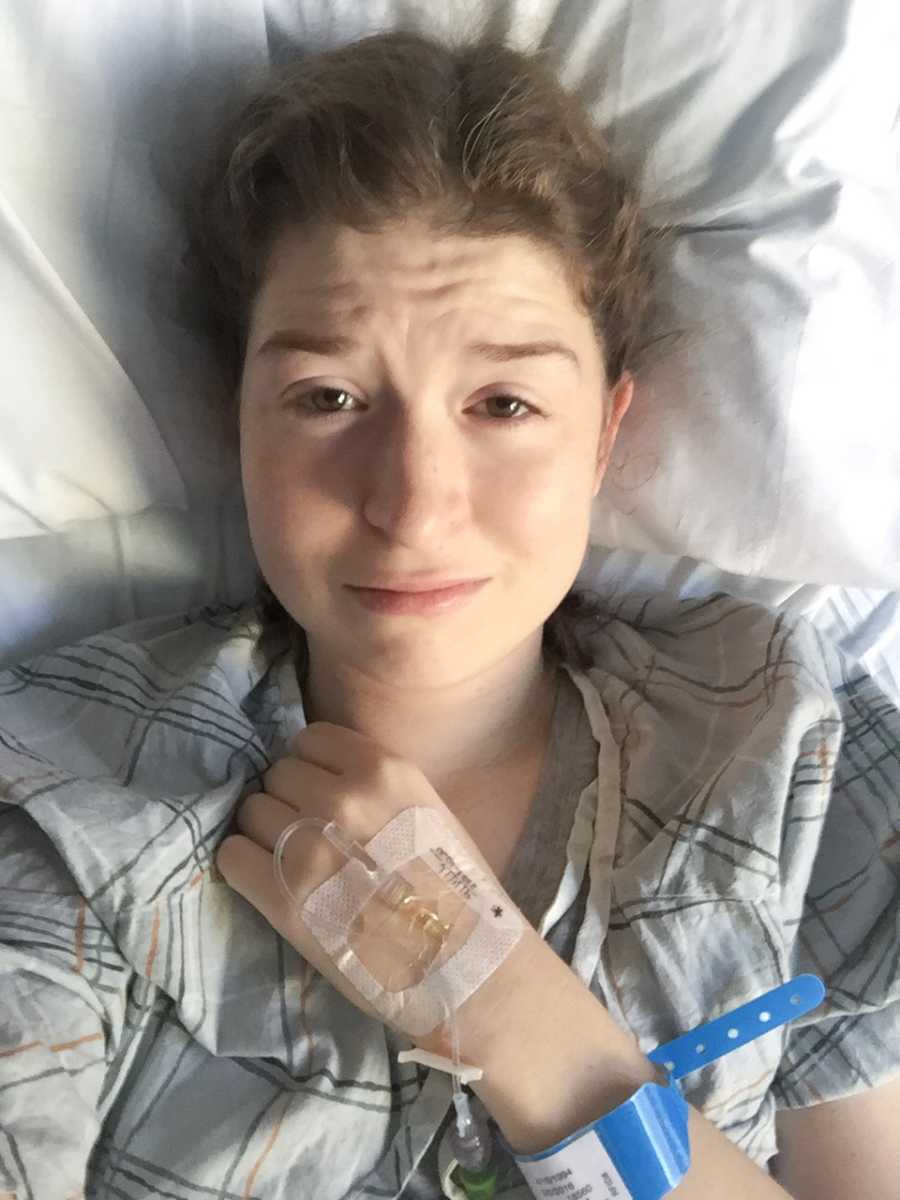
And so that’s how I found myself sitting in the Mt. Sinai Hospital ER waiting room, alone and absolutely terrified. When my name was called I was taken to an open bay, and a nurse began sticking EKG stickers all over my chest. After the EKG results came back normal, I hobbled alongside another nurse who helped me into a bed where I would remain for another 8 hours. Doctors and nurses kept passing by me, not expecting someone so young to be admitted on the grounds of ‘sharp chest pain.’ It was absolute chaos. I tried to stay distracted and focused on the word searches an orderly had kindly brought me. One of them was all about famous female actors. I circled ‘Meryl Streep’ with the nub of a pencil they gave me, and tried not to wiggle around too much for fear of accidentally messing with the IV stuck in my arm.
I laid there for what felt like an eternity, being wheeled in and out of various imaging rooms and conversing with an endless chain of doctors, a new one cycling through to review my case every few hours. I kept waiting for answers, but no one would tell me anything. ‘We’re still waiting for the results, we will let you know as soon as we hear something.’ I had been in denial over my own fragility for so long that now, laying in a busy open bay surrounded by other patients and frantic doctors, I finally acknowledged my pain. For years I had been pushing forward, and at last I was forced to just STOP.
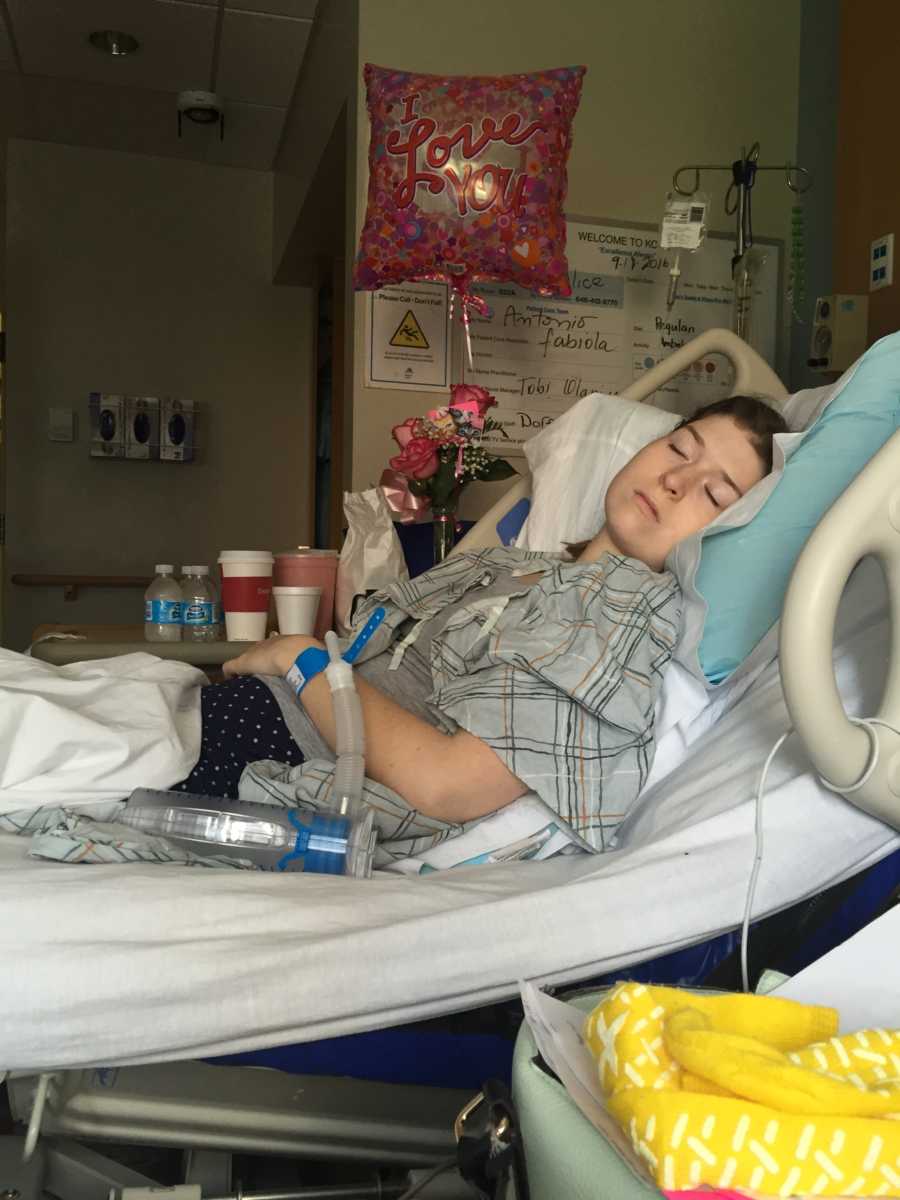
Eventually I was admitted, and over the next several days, my case became a little bit clearer. The pain I was experiencing was the result of something called pleurisy. The lining of my lungs had become so inflamed that they were pressed up against my rib cage, leaving barely any room for my chest to expand when breathing. In addition, I also had a pleural effusion on my left side, and I had to undergo a procedure called a thoracentesis to drain nearly two liters of fluid from my chest cavity.
Though the thoracentesis did help my pain slightly, my lungs were still very inflamed, and I was sent home with a prescription for Prednisone and a breathing tube to help strengthen my lungs. My ultimate ‘diagnosis‘ at the time, if you could even call it that, was ‘some kind of autoimmune response.’ Basically, the doctors at the hospital couldn’t actually tell me what had caused the pleurisy or the pleural effusion, and recommended I see a rheumatologist to undergo further testing. To say I hadn’t planned for my first semester of graduate school to begin so dramatically was an understatement. My time in the hospital conflicted with my seating audition at school, so I hardly participated in orchestra that first semester. It felt like a complete wash. I had worked so hard to get here, and suddenly I couldn’t even do what I was there to do.
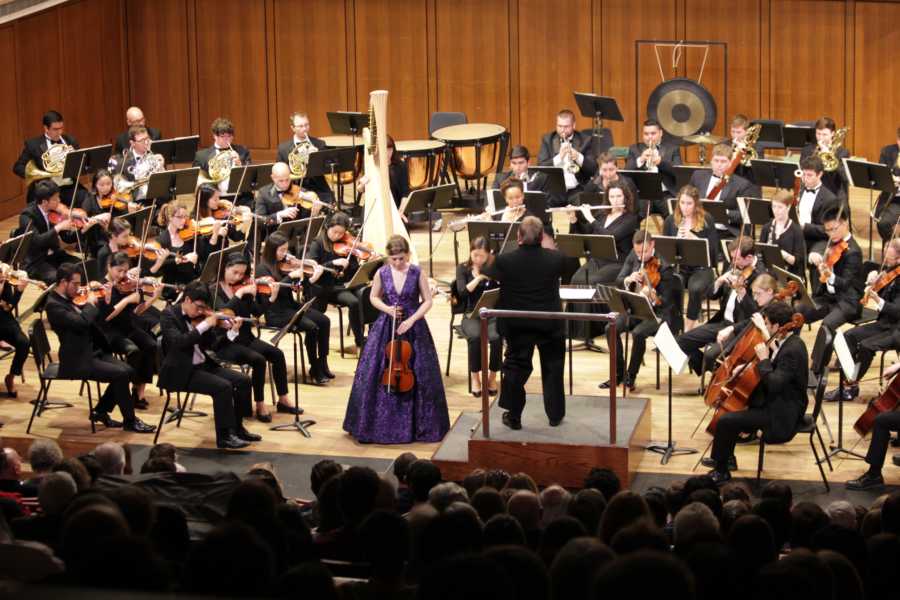
I have a distinct memory of having a complete meltdown in the middle of piano class a few weeks later. I had been on the steroids for a while at that point, and the side effects of the medication were taking their toll. I remember sitting at the piano, surrounded by other students I didn’t even know yet, and I couldn’t move my fingers. I had practiced for 2 hours the day before, but when I got to class I couldn’t remember anything. I ended up running out of the classroom and crying in the bathroom.
I soon started seeing a rheumatologist, but it appeared I was undiagnosable. I did, however, find a gastroenterologist to help me with that chronic diarrhea I had been ignoring for 4 years, which appeared to be the result of irritable bowel syndrome and some microscopic inflammation in my colon. I somehow survived my first semester, taking everything very easy and never putting myself out there musically. I already felt like I didn’t belong there, and I was so limited in what I could physically accomplish I mostly kept my head down, never taking on more than I could handle or seeking out any extra chances to perform. Though the health problems I was facing were entirely out of my control, I do still regret not being able to take full advantage of all the opportunities available to me during my time at Juilliard.
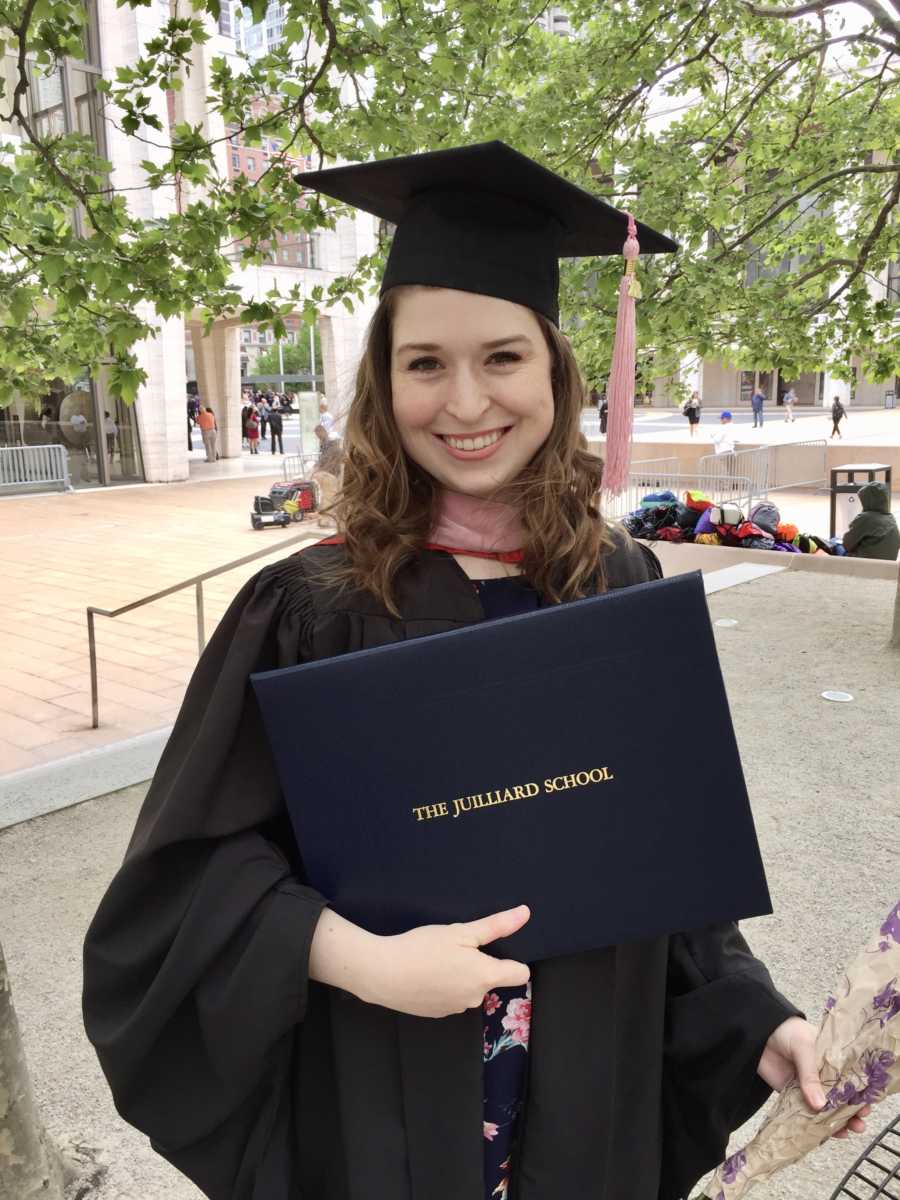
After that first year, I made it through the rest of my degree program relatively unscathed and graduated on time with the rest of my class. Still no closer to finding answers after what I would later come to describe as my first ‘flare up,’ I decided to move back to Los Angeles to pursue a freelancing career in music. I focused on building connections in the industry in LA, and even though I wasn’t feeling ‘great,’ I again pushed those feelings aside. I still had to manage the constant chest pain, which was eventually diagnosed as costochondritis, and of course there were the reoccurring bouts of walking pneumonia. But I was doing what I loved! The other stuff didn’t matter. As long as I was getting to play music and collaborate with amazing artists, my attention was preoccupied. Then one day in November 2018, I woke up and my eyes were almost completely swollen shut. I didn’t know if it was an allergic reaction or what, but after seeing allergists and eye doctors who had no explanation for me, I once again found myself in a rheumatologist’s office in search of answers.
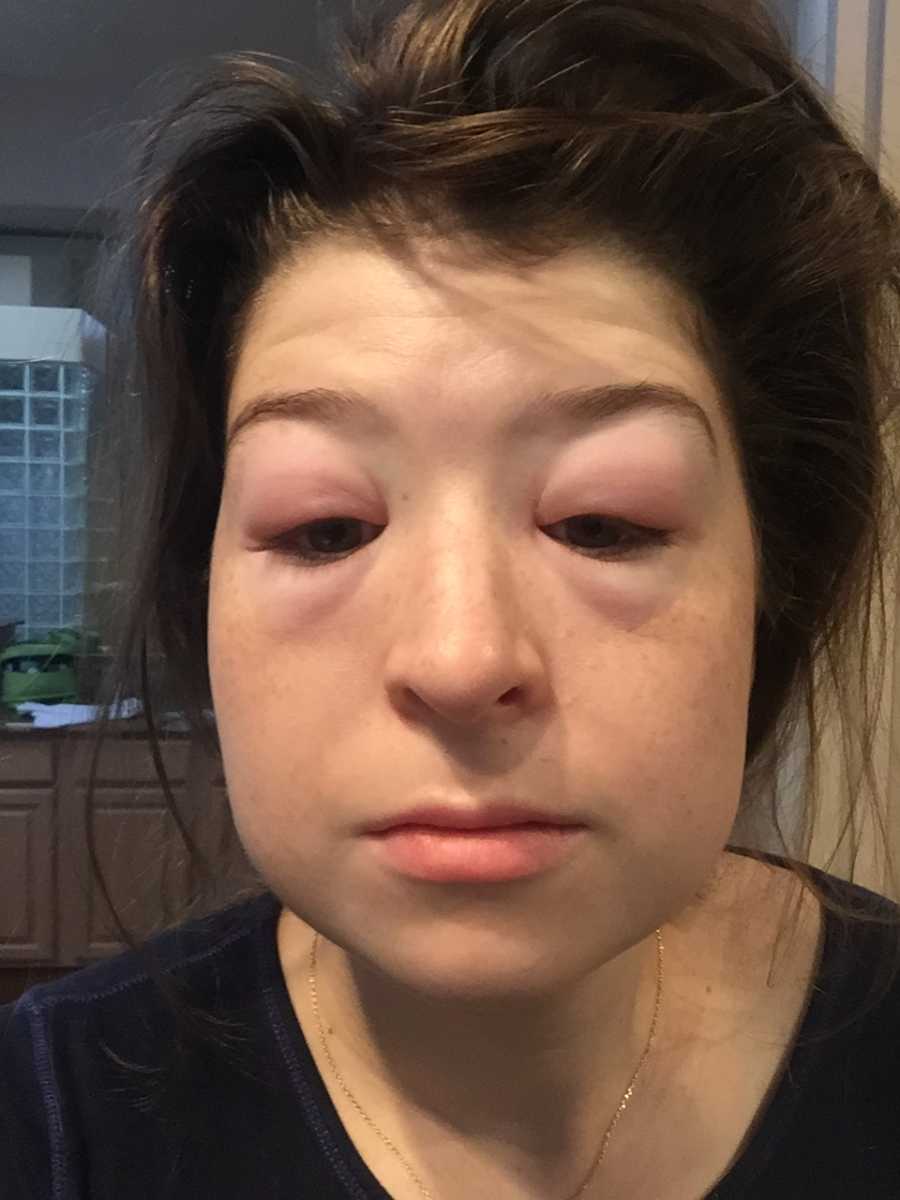
Finally, over two years after that first flare up in New York, I received my first official diagnosis: undifferentiated connective tissue disease. It would be another 5 months before I would be diagnosed with a second autoimmune condition, ulcerative colitis. After 4 colonoscopies, 2 endoscopies, and struggling with GI issues since all those auditions high school, I had figured out what was causing the problems. For the first time in years, I actually felt relieved, because now I had answers.
After my UC diagnosis, I began a treatment plan of biologic infusions paired with oral medications. I never quite reached remission, though, and soon had to add rectal therapies to reduce the inflammation in my colon. A 25 year old popping in rectal suppositories every night? What a blast! I switched to a diet focused on eliminating inflammatory foods, and started exercising consistently for the first time in my life. I also made an effort to reduce my stress levels by taking part in more self-care activities like journaling and meditation, and found that taking charge of the things in my life that I had some ability to control made me feel better about all of the things I didn’t have control over – like my diseases.
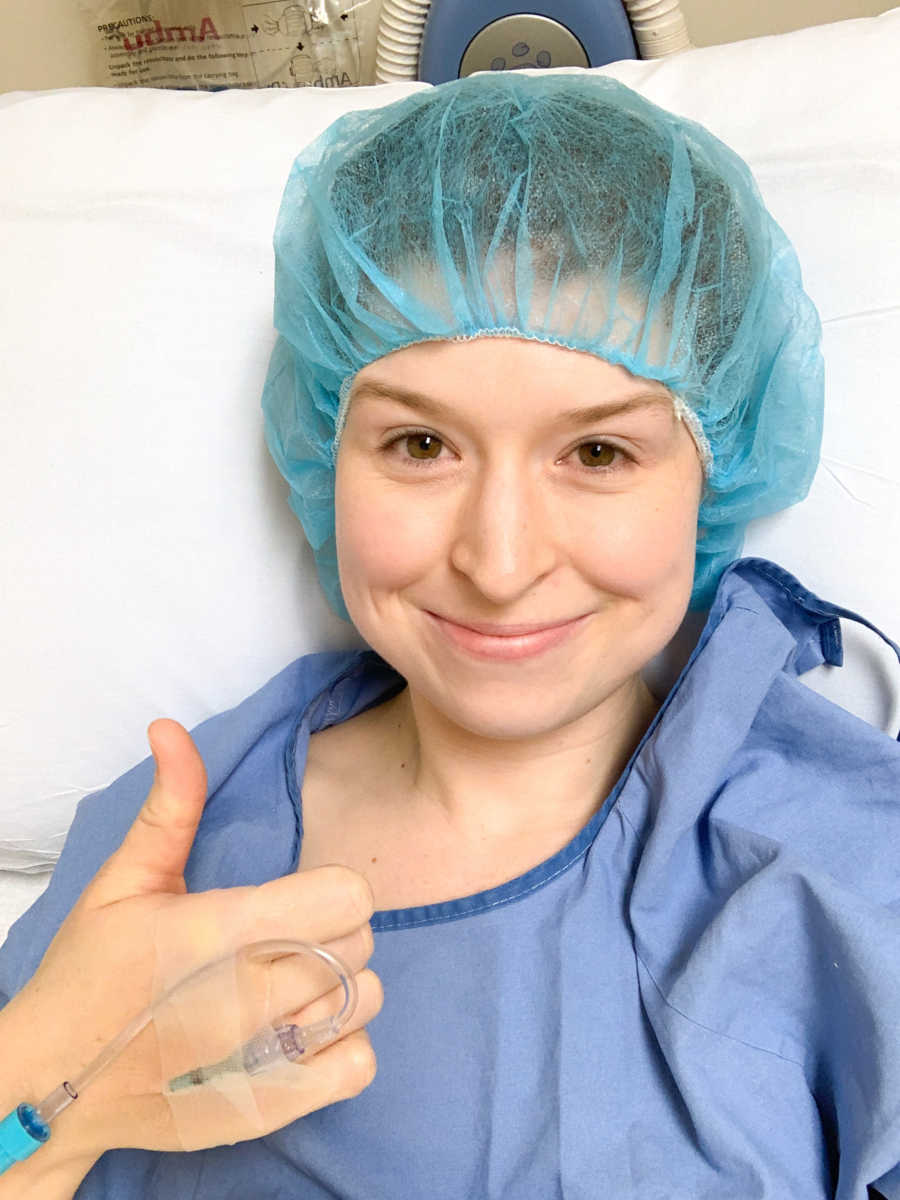
Most recently, I have been battling my worst IBD flare to date. In October of this year, l lost 15 pounds in less than two weeks, was running to the bathroom 20+ times a day, and managing frequent accidents, urgency, and rectal bleeding. I could actually see my strength depleting. All these months I had spent working to strengthen my body through weight training and yoga, all the foods I had eliminated to try and keep my symptoms at bay, all the medications I was taking – all that dedication and it still didn’t keep this from happening.
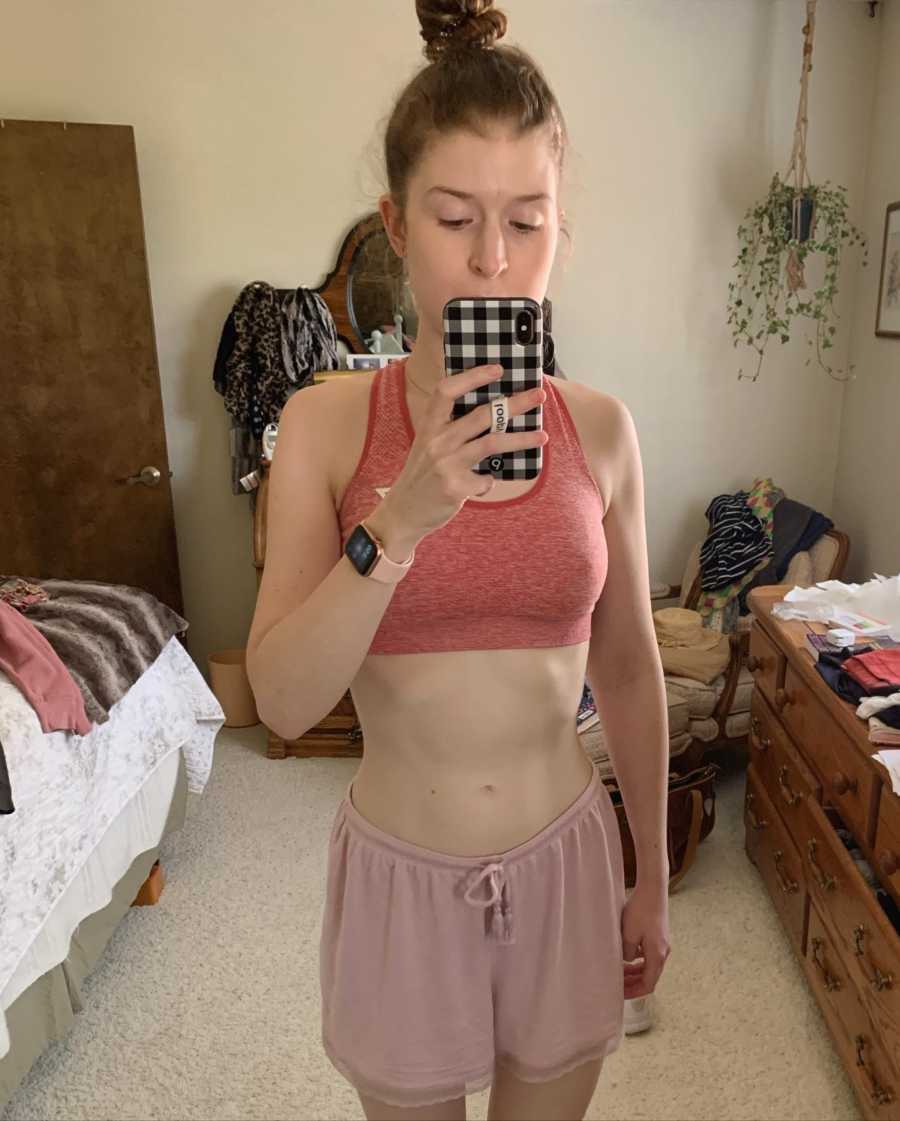
Thankfully, over the past 2 months my condition has improved greatly (thank you, Prednisone), but things are far from perfect. Even though the journey has been scary, exhausting, and frustrating, I wouldn’t trade all of that hardship for the lessons I’ve learned. After my diagnoses, I began publicly sharing my journey on Instagram. I decided to start openly talking about my health, sharing all the gory details, and to my surprise, by putting my experiences out in the open, I discovered a whole new community. Complete strangers sent me messages of comfort and support, asked to pray for me, and shared beloved family recipes just to cheer me up. A community of musicians, autoimmune warriors, and everyone in between unfolded right before my eyes, and made me feel emboldened to share even more.
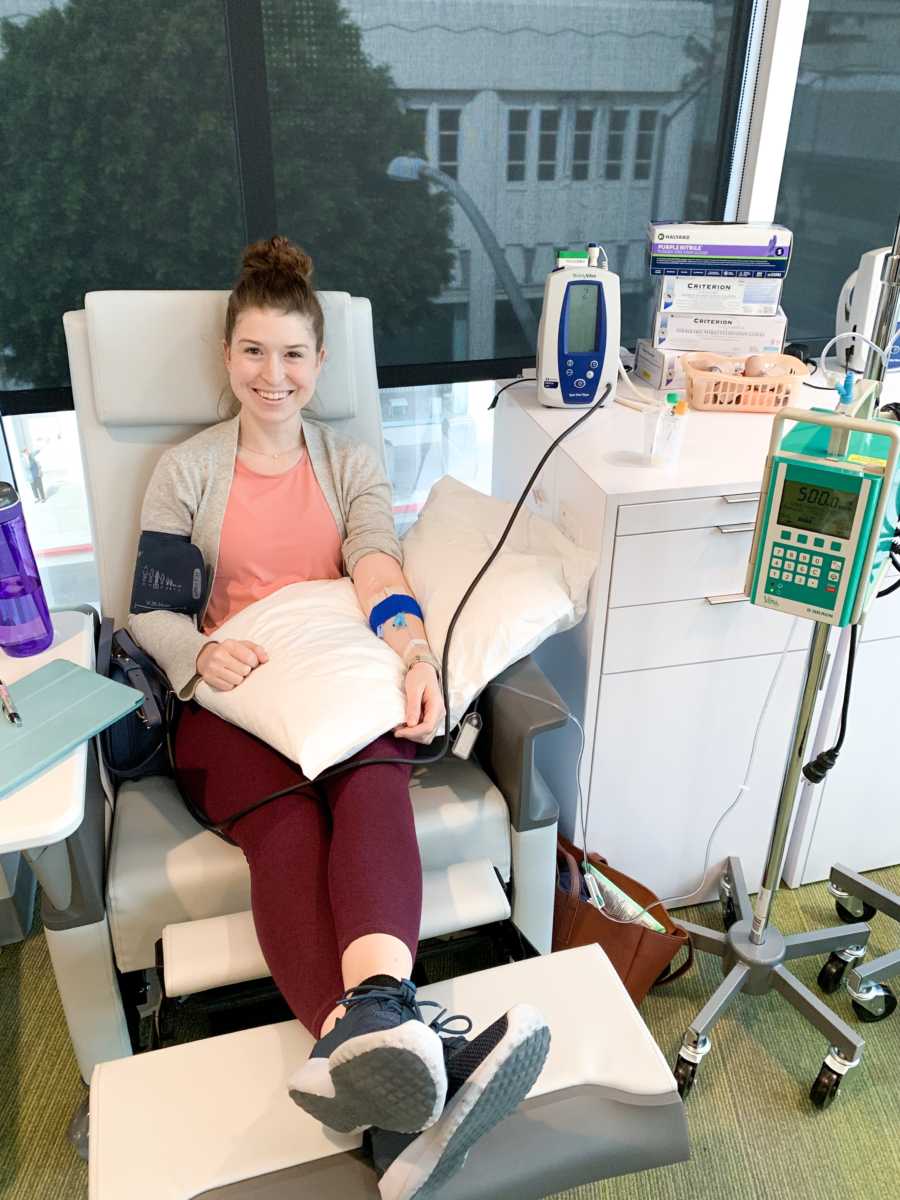
I always strive to be transparent about the struggles I face, and I fully accept the ramifications that those actions may have on my career as an artist should they come up in the future. I guess you could say I’ve been lucky that my worst flare up to date came during a pandemic when I was already forced to stay home, and had the opportunity to truly rest and listen to what my body needed. My health, both physically and mentally, has become a priority for me in ways that it hasn’t always been in the past, and ultimately just being able to get out of bed each morning matters a whole lot more to me right now than standing on stage performing a Hindemith solo sonata. Though I will say, I miss performing more than anything!
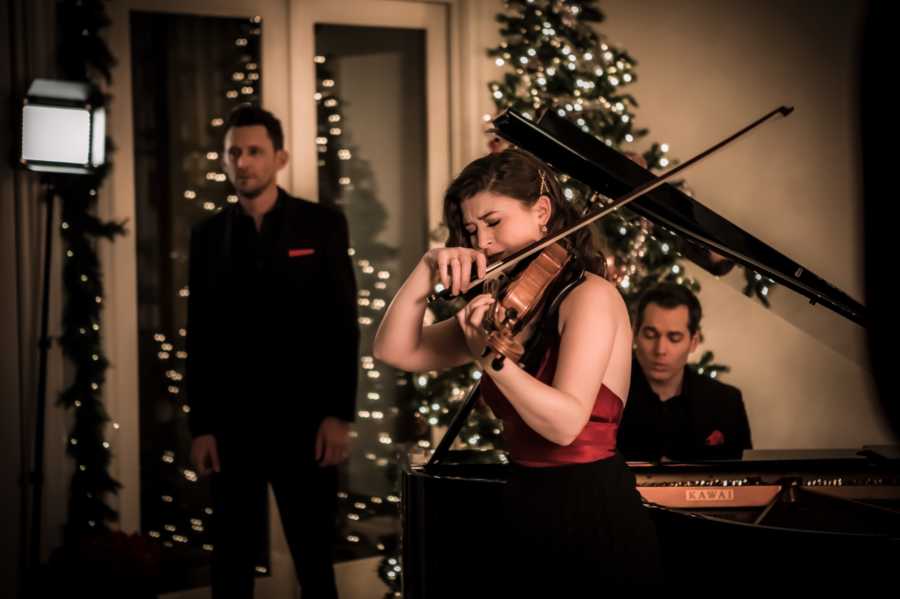
If you’ve made it this far, I want to encourage anyone who is struggling with chronic illness to give yourself grace. I’d be lying if I said I don’t have days where I wish my body just did what it was supposed to do. But I have countless more days of gratitude, where I am grateful for the things that my body is able to achieve despite the constant battles it faces. This road of chronic illness is not easy, is often filled with more bumps than my Uber drive through Central Park, and sometimes it takes a lot of time, effort, and persistence to get to the other side of the diagnosis. But I promise you will get there! And once you find this acceptance, you will discover that living a life with chronic illness just makes you that much more special.
*If you are interested in following my heath journey, you can find all my funny stories plus all those gory details I mentioned on my Instagram account, @alicepingviola. In December 2020 I will also be launching a brand new YouTube channel called ‘Chronically Musical,’ that I hope will continue to spread awareness about chronic illness and how to manage a high-stress lifestyle while taking stock of what is most important in life.*”
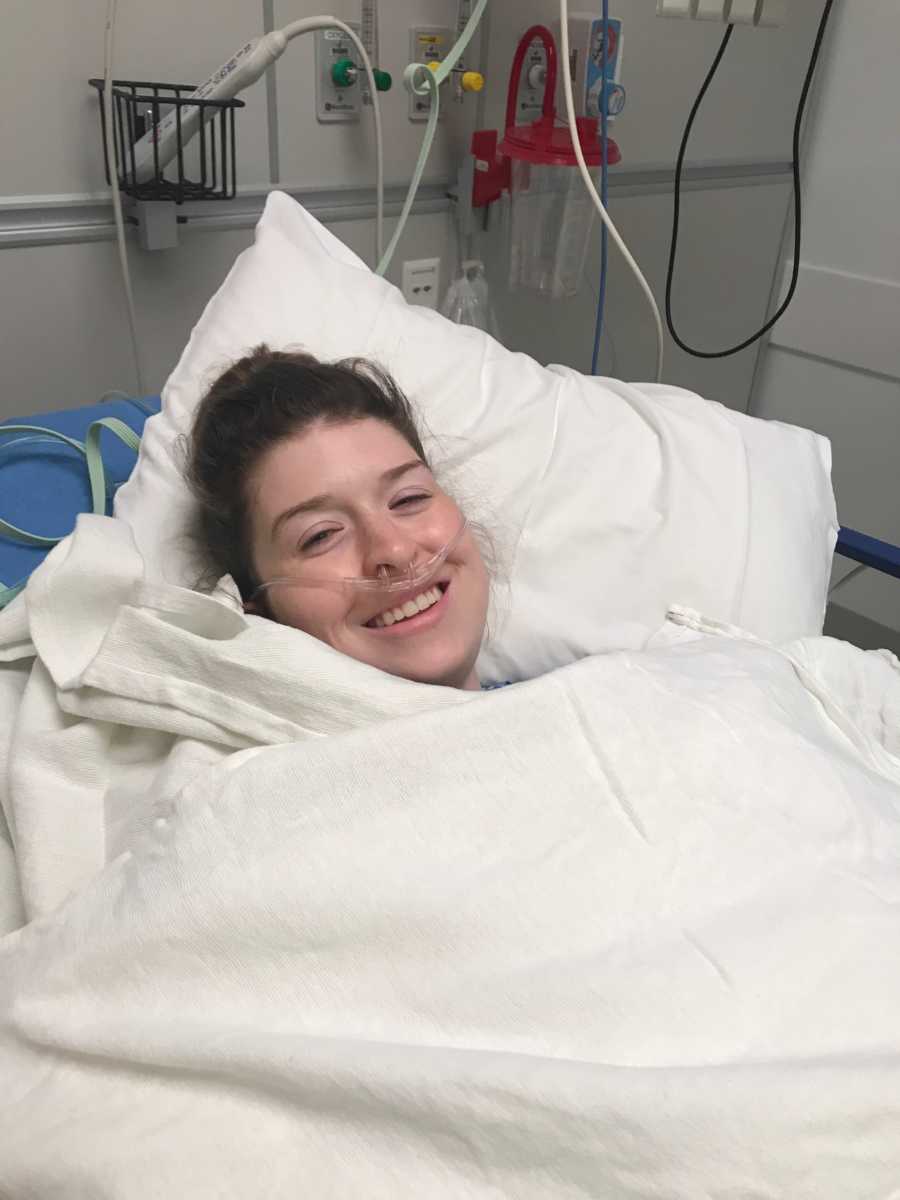

This story was submitted to Love What Matters by Alice Ping of Los Angeles, CA. You can follow her journey on Instagram and on YouTube. Submit your own story here and be sure to subscribe to our free email newsletter for our best stories, and YouTube for our best videos.
Read more stories about chronic illness below:
Provide hope for someone struggling. SHARE this story on Facebook and Instagram to let them know a community of support is available.

